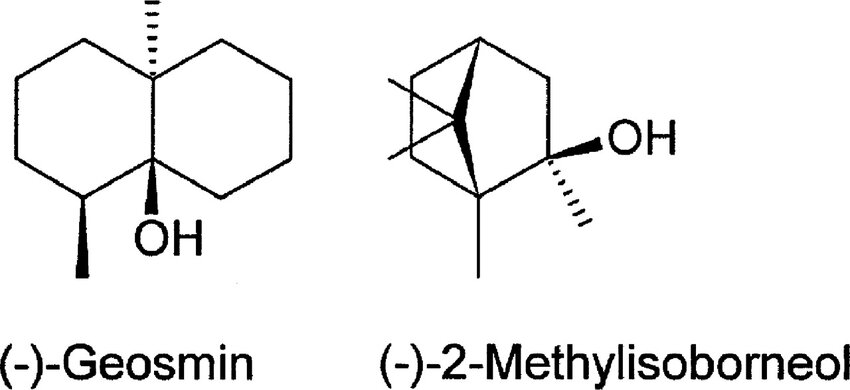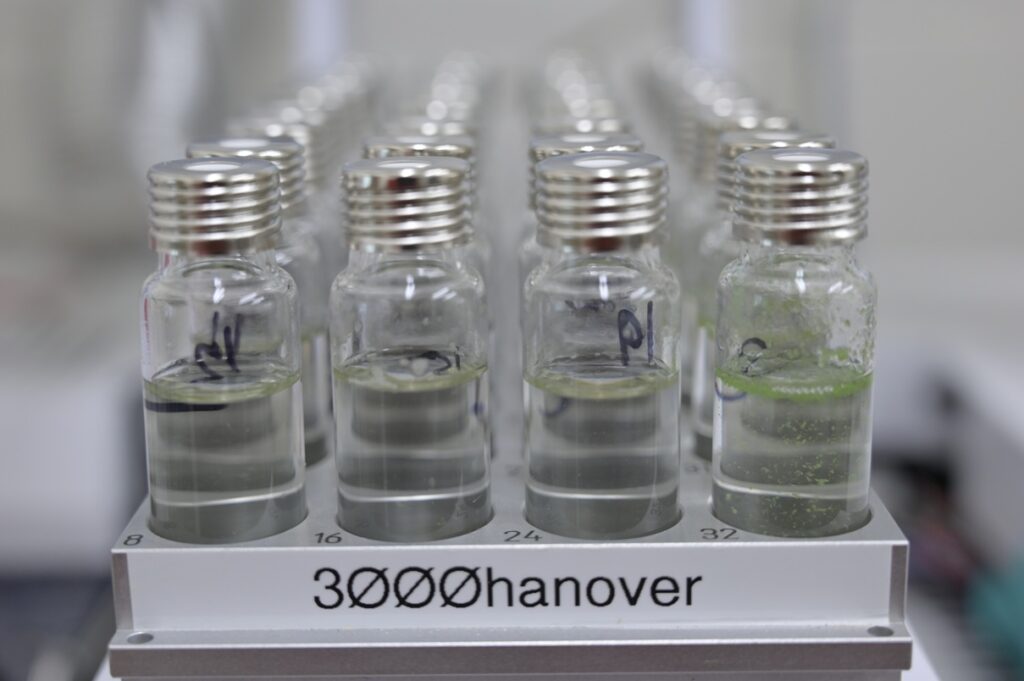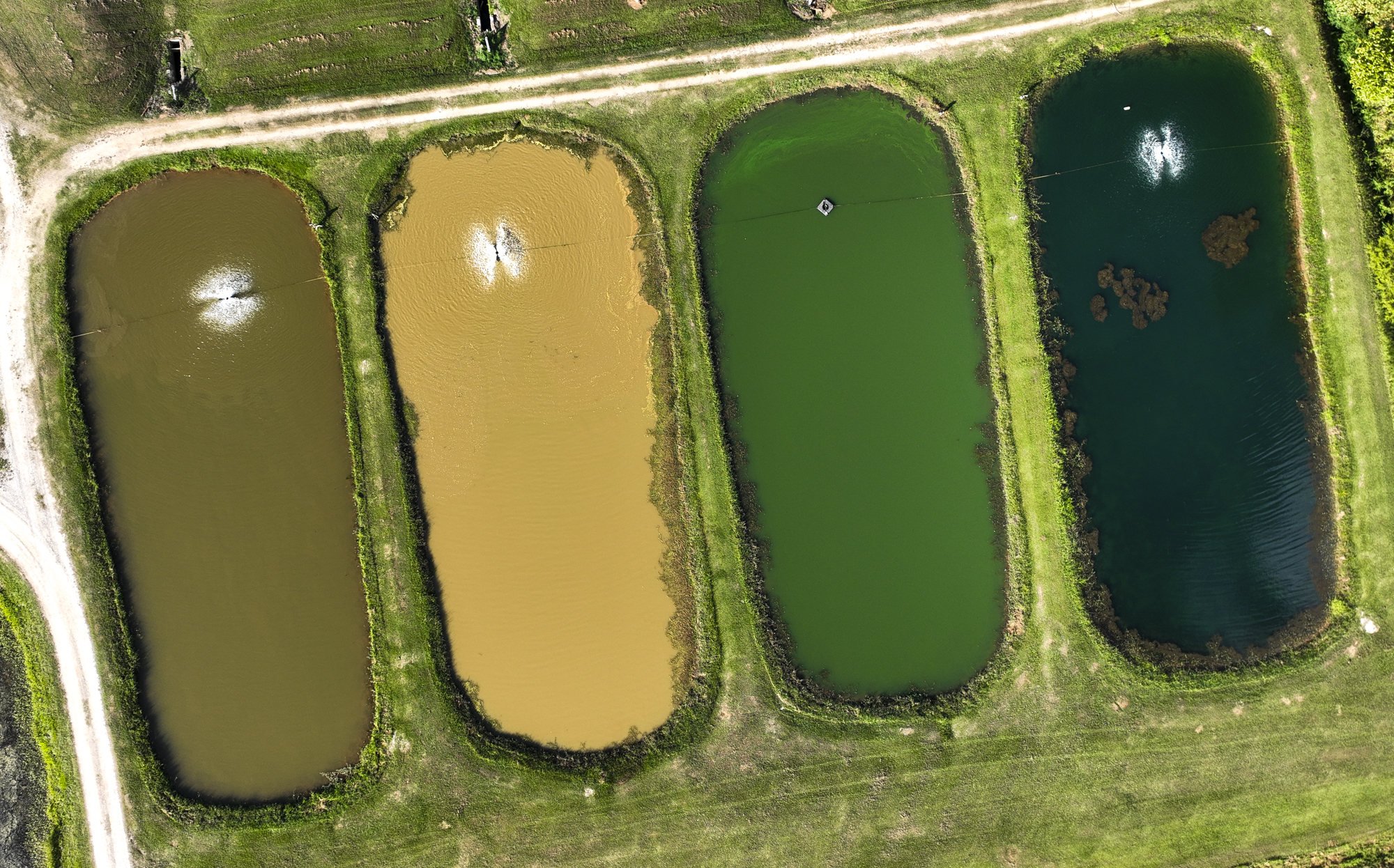There are many compounds in water that create unpleasant tastes and odors (T&O; also called off-flavors). Two of the more problematic compunds in drinking water and aquaculture products, include geosmin (trans-1,10-dimethyl-trans-9-decalol) and 2-methylisoborneol (MIB). Geosmin and MIB are harmless but can make water and aquaculture products taste muddy and earthy. These compounds are usually found at very low concentrations, but some people are very sensitive to geosmin and MIB and can detect them at concentrations as low as 10 ng/L.

To collect these samples, we ask clients to fill two 20 ml glass vials with foil lined lids completely full (no air bubbles) for each freshly collected water sample and then parafilm the vials and caps before shipping quickly with a cold pack (no dry ice). Unpreserved samples should be analyzed within 3 days. Our analysis turnaround time is typically 24 hrs from arrival.
We use solid phase microextraction (SPME) followed by Gas Chromatography-Mass Spectrometry (GC-MS) to analyze MIB and geosmin using standard method 6040D. The method we use for SPME GC-MS is published in the peer-reviewed, scientific literature. You can find several recent publications where we collected MIB and geosmin data at the bottom of this page.
If you have questions about our taste and odor analyses for MIB and geosmin using SPME GC-MS or other water quality analyses that we offer, please contact us.

We have published many studies using these taste and odor data. Some are available at the links below.
- Hennessey, A. V., M. B. McDonald, P. P. Johnson, M. F. Gladfelter, K. L. Merrill, S. E. Tenison, S. S. Ganegoda, T. C. Hoang, H. A. Torbert, B. H. Beck, and A. E. Wilson. 2025. Lowering pH enhances copper toxicity: A novel strategy for controlling harmful algal blooms and off-flavors. Ecotoxicology and Environmental Safety 302:118549.
- Anantapantula, S., S. Wittenzeller, M. F. Gladfelter, S. E. Tenison, H. Zinnert, A. P. Belfiore, and A. E. Wilson. 2025. Copper sulfate treatment harms zooplankton and ultimately promotes algal blooms: A field mesocosm experiment. Harmful Algae 142:102800.
- Chislock, M. F., B. K. Olsen, J.J. Choi, A. Abebe, T. L. Bleier, and A. E. Wilson. 2021. Contrasting patterns of 2-methylisoborneol (MIB) vs. geosmin across depth in a drinking water reservoir are mediated by cyanobacteria and actinobacteria. Environmental Science and Pollution Research 28:32005-32014.
- Fernandez-Figueroa, E. G., R. P. Buley, M. U.G. Barros, M. F. Gladfelter, W. D. McClimans, and A. E. Wilson. 2021. Carlson’s trophic state index is a poor predictor of cyanobacterial dominance in drinking water reservoirs. AWWA Water Science 3(2):e1219.
- Olsen, B. K., M. F. Chislock, A. Rebelein, and A. E. Wilson. 2017. Nutrient enrichment and vertical mixing mediate 2-methylisoborneol and geosmin concentrations in a drinking water reservoir. Water Science and Technology: Water Supply 17(2):500-507.
- Olsen, B. K., M. F. Chislock, and A. E. Wilson. 2016. Eutrophication mediates a common off-flavor compound, 2-methylisoborneol, in a drinking water reservoir. Water Research 92:228-234.
